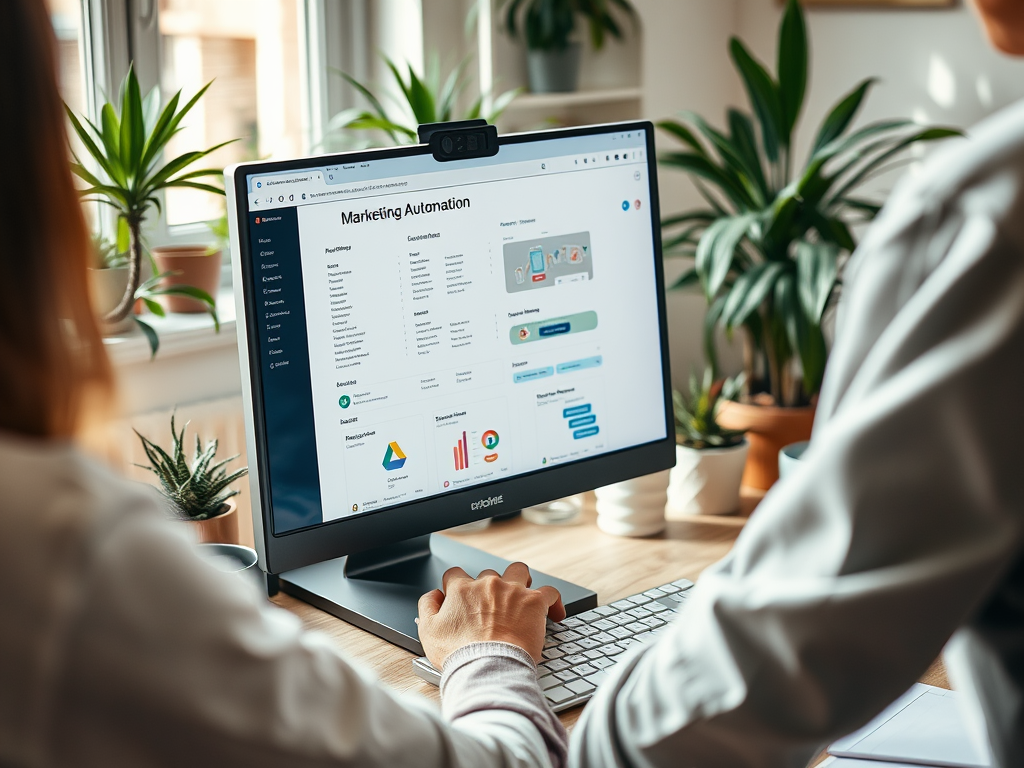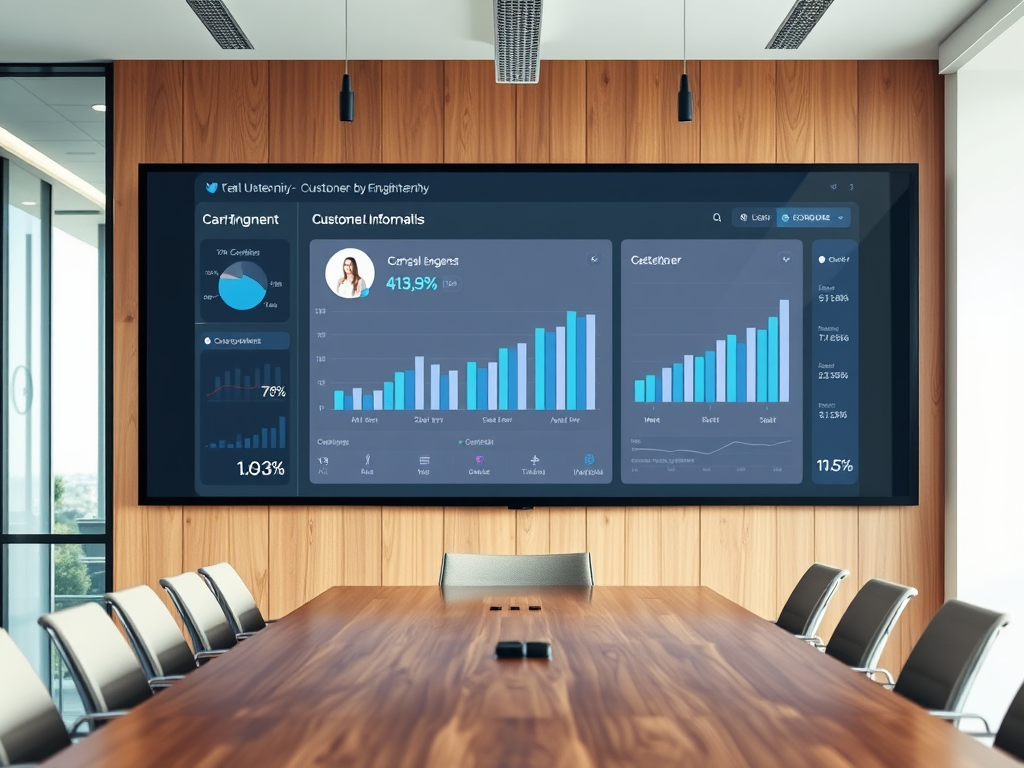In today’s fast-paced digital landscape, leveraging technology is not just advantageous; it’s essential for marketers striving for success. Inbound marketing automation has emerged as a crucial component that allows businesses to engage with their audience more effectively and streamline many marketing processes. The harmonious blend of automation and inbound marketing strategies positions brands to capture leads, nurture relationships, and drive conversions at an unprecedented scale. But how exactly does a marketer navigate this complex ecosystem and harness its potential? In this article, we will explore the nuances of inbound marketing automation, examining the critical strategies and tools that can help organizations not only survive but thrive. Recognizing the power of automation is the first step toward creating a more impactful marketing strategy that resonates with your audience and fosters meaningful connections.
Understanding Inbound Marketing Automation

Inbound marketing automation involves the utilization of software to manage and automate marketing processes, ultimately aiming to drive leads into the sales funnel through valuable and personalized content. The practice enables marketers to attract, engage, and delight customers with less manual effort. It encapsulates a range of activities, from automated email drip campaigns to social media posting, providing a comprehensive approach to customer interaction. The essence of inbound marketing lies in attracting customers by creating valuable content and experiences tailored to their needs. By automating repetitive tasks, marketers free up time to focus on strategy and creativity. Consequently, they can craft more personalized experiences that truly engage prospects and customers alike.
The Importance of Inbound Marketing Automation

Integrating automation into inbound marketing strategies can yield a multitude of benefits, enhancing operational efficiency and customer engagement. One of the most significant advantages is the ability to deliver consistent messaging across multiple channels while efficiently managing a large volume of tasks. Automation allows for faster lead nurturing, ensuring that potential customers receive timely information that aligns with their interests. By facilitating immediate responses and follow-ups, brands can reduce the chances of losing leads to slower competitors. Furthermore, automation improves data collection, enabling marketers to analyze consumer behavior and refine their marketing strategies in real-time. In a world where customer expectations are at an all-time high, embracing automation is no longer an option; it’s a necessity for success.
Key Components of Inbound Marketing Automation
Implementing inbound marketing automation effectively requires a solid understanding of its key components, which include tools for email marketing automation, lead generation and management, and content management and distribution.
| Component | Description |
|---|---|
| Email Marketing Automation | Automated campaigns to nurture leads and engage customers based on their behavior and preferences. |
| Lead Generation and Management | Techniques to capture and nurture potential customers through efficient processes. |
| Content Management and Distribution | Scheduling and distributing content across various platforms to maximize reach. |
Email Marketing Automation
Email marketing automation is one of the pillars of inbound marketing automation. Effective automated email campaigns can intelligently nurture leads and engage customers throughout their buyer’s journey. By segmenting your audience based on behavior, demographics, and preferences, you can create targeted messages that resonate with them. Engaging subject lines, personalized content, and strategically timed emails can dramatically improve open and click-through rates. Incorporating A/B testing also allows brands to refine their email strategies continuously. Ultimately, well-executed email automation can result in higher engagement levels and increased conversions.
Lead Generation and Management
Strategies aimed at capturing and managing leads are crucial in inbound marketing automation. Techniques such as content offers, landing pages, and lead magnets can help attract potential customers. Once leads are captured, automated systems facilitate their nurturing through tailored communication, ensuring that each lead receives relevant information at the right time. Implementing scoring systems allows marketers to prioritize leads based on their interactions, helping to focus efforts on those most likely to convert. Automation not only simplifies lead management but also ensures that no potential customer is overlooked during the nurturing process.
Choosing the Right Tools for Inbound Marketing Automation
Selecting the right tools for inbound marketing automation is a significant decision that can influence overall marketing success. Here are some essential features to consider when evaluating options:
- Integration Capabilities: Ensure that the automation tool integrates well with existing systems.
- User-Friendliness: A tool should be intuitive and easy to use to minimize the learning curve.
- Analytics and Reporting: Robust reporting tools help track performance and ROI effectively.
- Customer Support: Reliable customer support is essential for addressing any issues swiftly.
- Scalability: Choose tools that can grow with your business.
Developing an Inbound Marketing Automation Strategy
Creating a successful inbound marketing automation strategy involves several critical steps that can greatly enhance your brand visibility and customer engagement. Start by defining your target audience and creating detailed buyer personas based on extensive research. By understanding their specific pain points and preferences, you can tailor your content and messaging more effectively.
Next, implement audience segmentation to deliver personalized experiences. Consider utilizing dynamic content that adjusts based on user behavior to maximize relevance. This approach not only captivates the audience but fosters loyalty over time. Additionally, a strong focus on lead nurturing will enhance the effectiveness of your campaigns, keeping customers engaged through the funnel. Incorporating automated workflows ensures that no lead goes unattended, improving the chances of conversion.
Measuring Success in Inbound Marketing Automation
Establishing key performance indicators (KPIs) is essential to assess the effectiveness of inbound marketing automation initiatives. Here are some critical KPIs marketers should track:
- Conversion Rates: Monitor how many leads are converting into customers.
- Engagement Levels: Track metrics such as click-through rates and open rates.
- Return on Investment (ROI): Evaluate the financial effectiveness of campaigns.
- Lead Velocity Rate: Measure the growth rate of qualified leads over time.
- Customer Satisfaction: Use surveys and feedback tools to gauge customer happiness.
Conclusion
Embracing inbound marketing automation is crucial for organizations aiming to thrive in today’s competitive landscape. By understanding its core principles and implementing effective strategies, businesses can improve efficiency, enhance customer engagement, and drive conversions. Achieving success requires continuous evaluation and adaptation, leveraging data-driven insights to refine marketing approaches. The marriage of inbound marketing with automation not only streamlines operations but also fosters meaningful connections with customers. As brands continue to navigate the complex world of digital marketing, those who embrace these strategies will be well-positioned to achieve long-term success.
Frequently Asked Questions
- What is inbound marketing automation? Inbound marketing automation is the use of software and tools to automate marketing tasks and workflows, enhancing efficiency and streamlining customer engagement.
- What are the benefits of inbound marketing automation? Implementing inbound marketing automation can lead to improved efficiency, better lead management, targeted customer engagement, and data-driven insights.
- How do I choose the right automation tool? Consider factors such as ease of use, integration capabilities, features offered, and customer support when evaluating automation tools.
- Can I automate my entire inbound marketing strategy? While many components can be automated, it’s essential to maintain a balance between automation and personalized customer interactions to retain authenticity and effectiveness.
- How can I measure the success of my automation strategy? Track KPIs such as conversion rates, lead engagement levels, and ROI to assess how well your inbound marketing automation strategy is performing.
